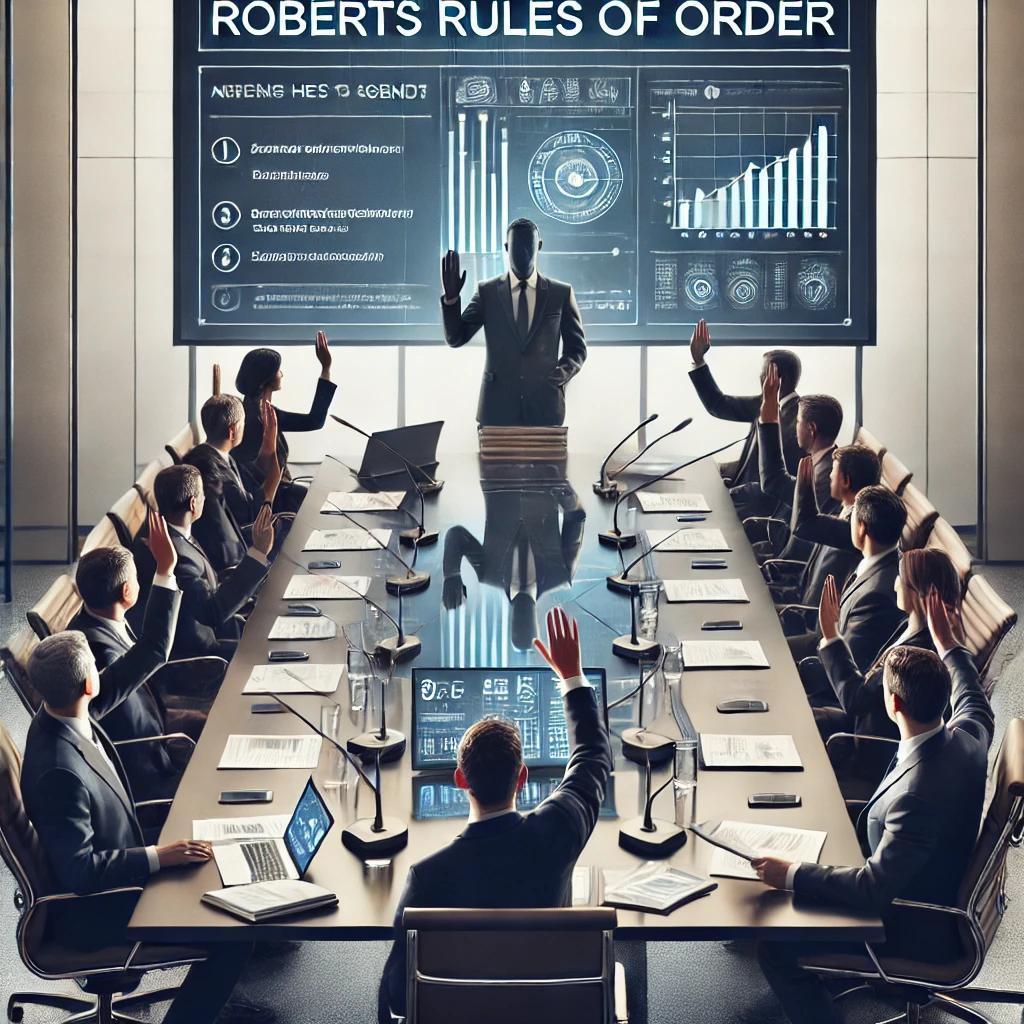Roberts Rules of Order simplified for HOA meetings

Roberts Rules of Order simplified
For those involved in managing Homeowner Association (HOA) meetings, looking for ways to boost efficiency, considering Robert's Rules of Order can be a game-changer. These meetings are essential for HOA operations, providing a platform for board members to collaborate on community management issues, from maintaining common areas to enhancing facilities. Effectively run meetings ensure that all topics on the agenda are addressed and each member gets to voice their thoughts. The smooth operation of these meetings is critical for successful HOA governance.
Nevertheless, challenges are common in HOA meetings. These can include maintaining decorum during contentious discussions, ensuring diverse participation, and managing complex voting processes.
Robert's Rules of Order offer a structured method to navigate these challenges, fostering more effective and productive meetings. This exploration will delve into how these strategies specifically benefit HOA board meetings.
What are Robert’s Rules of Order for meetings?
Dating back to 1876, Robert's Rules of Order is a guide for parliamentary procedure created by Henry Martyn Robert to bring order to meetings and aid in decision-making. Its efficiency has seen it adopted across various settings, including HOAs, to streamline organizational processes.
The core tenets of Robert's Rules of Order aim to refine board meeting operations, focusing on:
Equal rights for all board members
Every board member should enjoy equal rights during meetings. High-ranking members must avoid bias, treating everyone fairly. Any breaches of this principle should be addressed collectively by the board.
Always with a clear focus
Discussion should be limited to one motion at a time, ensuring debates remain relevant.
Have an orderly debate
Likewise, only one individual should speak at a time, maintaining alignment with the agenda.
Practicing respectful conduct
Respectful interactions are mandatory, precluding personal attacks.
The majority rules
Decisions generally follow the majority, with exceptions thoroughly debated before voting.
How to use Robert’s Rules of Order for meetings in your HOA
One major advantage of Robert's Rules is their adaptability. They can be tailored to fit an HOA's distinct needs and challenges. Each HOA has its unique landscape, which may require specific adjustments or solutions that these rules can address effectively. Beyond the primary principles, the manual offers a general framework for structuring meetings.
Meetings typically start with the presiding officer calling the session to order, outlining objectives. This is followed by a roll call and a quorum check to confirm attendance is sufficient for conducting business. Past meeting minutes are then reviewed, amended as necessary, and approved. Once preliminary matters are settled, updates on ongoing or upcoming projects are presented. The floor is then open for new ideas, allowing members to propose and debate issues.
If formal voting is needed, HOAs may rely on bylaws to guide the process. Voting can take various forms, such as voice votes, show of hands, or written ballots. After concluding the agenda, the meeting is formally adjourned by the officers or chair.
Strategies for effective HOA meetings
To integrate Robert's Rules into HOA meetings more efficiently, implementing strategic measures is crucial. Crafting clear agendas can keep meetings organized and focused. Consider creating agenda templates for consistency, aiding in maintaining organized records of discussions and decisions which are easily accessible for current and future board members.
Before meetings commence, ensuring board members are familiar with the core principles of Robert's Rules enhances time management and focus, allowing members to come prepared and with clear expectations.
Equipping the board with a strong understanding of these rules also encourages active participation, supporting the "equal rights" principle.
Robert’s Rules of Order motions
Incorporating motions from Robert's Rules can bolster meetings. These include adopting, amending, tabling, postponing, referring, and reconsidering motions, all serving distinct but complementary purposes that foster effective communication.
A motion to adopt moves to accept a resolution, finalizing a proposal after discussion.
An amendment motion suggests changes to a current motion under consideration.
A tabling motion allows deferring a topic for later, useful when additional information or time is needed.
A postponement motion delays a discussion to a designated future time, managing the agenda effectively.
Referral motions are used when further analysis or recommendations are needed from a committee, often prompting the tabling or postponing of a motion.
Finally, reconsidering motions allow members to revisit a prior decision if new information arises or circumstances change.
This comprehensive overview of Robert’s Rules of Order, with insights on utilizing them strategically in HOA meetings, equips your board with the tools required to enhance and streamline meeting processes for better outcomes.





